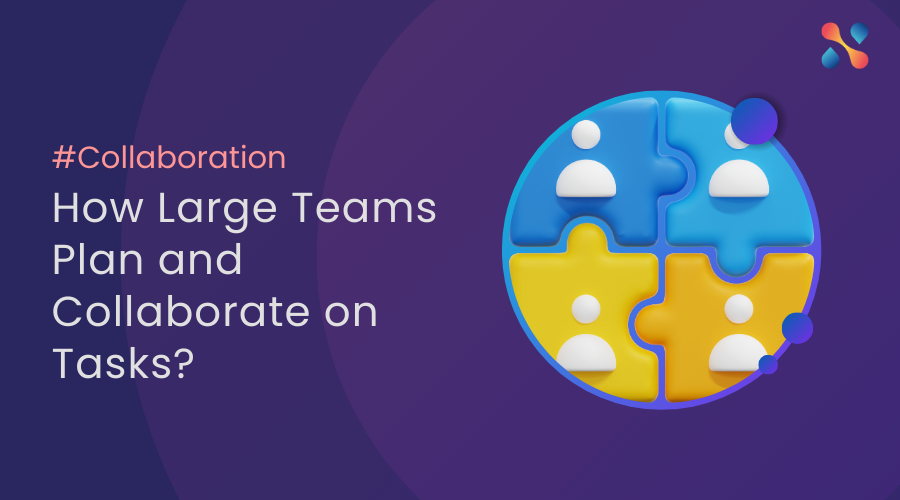Managing a project with a team scattered across time zones, cultures, and digital platforms isn’t for the faint of heart. Yet, here we are, in an era where remote-first organizations are tackling this multifaceted challenge head-on daily.
With this transformation, project management has evolved, demanding new strategies to handle the unique challenges of a dispersed workforce.
But how do we ensure that projects run smoothly when the traditional office backdrop fades away, and screens become our primary windows to colleagues?
This write-up takes an exhaustive look into these challenges and offers actionable strategies, ensuring that distance becomes just a word, not a barrier to achieving organizational goals.
What are the challenges of project management in remote teams?
Remote work has become increasingly common, offering numerous advantages. However, managing projects in remote teams also introduces distinct challenges. Let’s explore these challenges in detail.
Navigating time zone differences for synchronized collaboration.
• The Challenge: Coordinating with team members in different time zones can lead to communication delays.
• The Impact: Tasks might be delayed, waiting for input from a team member in a different time zone, potentially leading to missed deadlines.
Ensuring clear and consistent communication across virtual platforms.
• The Challenge: In the absence of face-to-face interactions, there’s a risk of miscommunication on virtual platforms.
• The Impact: Misunderstandings can result in errors, consuming additional time and resources to rectify.
Building and maintaining team cohesion without face-to-face interactions.
• The Challenge: Regular in-person interactions, which foster team cohesion, are absent in remote settings.
• The Impact: A lack of such interactions can result in teams feeling disconnected, potentially affecting motivation and morale.
Monitoring team productivity without micromanaging.
• The Challenge: It can be challenging to ensure team productivity without resorting to excessive oversight.
• The Impact: Over-monitoring can lead to decreased team morale and job satisfaction.
Addressing technical issues and ensuring reliable access to tools.
• The Challenge: Varying quality of internet connections and access to essential tools can disrupt work.
• The Impact: Technical disruptions can lead to work delays and decreased productivity.
Onboarding new team members without in-person training.
• The Challenge: Traditional onboarding processes, which often involve in-person training, are difficult to implement remotely.
• The Impact: New team members might take longer to integrate, leading to potential inefficiencies.
Protecting sensitive data in decentralized work environments.
• The Challenge: Ensuring data security becomes more complex when team members access company data from various locations.
• The Impact: Potential data breaches can have severe consequences, including financial and reputational damage.
How do teams effectively manage projects when working remotely?
Finding your way through remote work and looking for effective project management strategies? You’re in good company. Many teams are facing similar challenges, and there are proven methods to make remote project management a breeze. Let’s get into the details.
Use Time-Tracking Software to Monitor Individual Productivity
Time-tracking software is essential because it provides a transparent view of how time is being spent on various tasks, especially for teams working remotely. This transparency fosters accountability among team members and helps identify areas that may need optimization for better efficiency.
Implement Daily Stand-Up Meetings for Quick Status Updates
Daily stand-up meetings serve as quick catch-ups that help align the team’s goals, address any immediate issues, and set the tone for the day. Especially when leading a location-independent company, these meetings offer multiple benefits such as ensuring everyone is aligned, providing a platform for quick problem-solving, and boosting team morale through regular engagement.
Utilize Collaboration Tools for Real-Time Document Sharing
Collaboration tools have revolutionized the way documents are shared and edited. These tools ensure that everyone has access to the most recent version of a document, allow multiple people to collaborate in real-time, and consolidate changes and feedback in one centralized location.
In addition, it might be beneficial to invest in an efficient contract awards research tool to streamline the process of contract management and awarding within the team.
Set Clear Deadlines and Milestones to Measure Progress
Clear deadlines and milestones are crucial for keeping projects on track. They help to prioritize tasks based on their time sensitivity, serve as markers for team motivation, and provide a clear understanding of what needs to be accomplished and by when.
Designate a Virtual War Room for Urgent Discussions
A virtual war room is an online space where team members can quickly gather to discuss urgent matters. This approach speeds up decision-making, offers the flexibility to address issues as they arise, and fosters rapid collaboration by bringing the right people together at the right time.
Conduct Regular One-on-One Check-ins for Personalized Feedback
Regular one-on-one check-ins are invaluable for providing personalized feedback and fostering professional growth. These sessions help build trust between managers and employees and offer a platform to discuss individual concerns and career aspirations.
Use Video Conferencing for Team Building and Social Interaction
Video conferencing adds a personal touch to remote interactions by allowing team members to see and hear each other. This visual and auditory connection strengthens team bonds, makes interactions more engaging than written communication, and provides additional visual cues for better understanding.
It’s important to remember that while these strategies can be effective in streamlining your operations while also helping to motivate your team, they should be tailored to fit your organization’s specific needs and dynamics.
Conclusion
As the boundaries of traditional offices dissolve, the strategies to manage projects in remote-first organizations become the anchors of success.
Adopting these strategies not only ensures efficient project management but also paves the way for a resilient, adaptable, and forward-thinking organization.
While the strategies discussed offer a robust framework, the magic lies in customizing them to fit your team’s unique needs. So, take these strategies, adapt them, and set your remote team on a course toward unparalleled productivity and engagement.
After all, the future of work is not just about where you work, but how you make it work.







